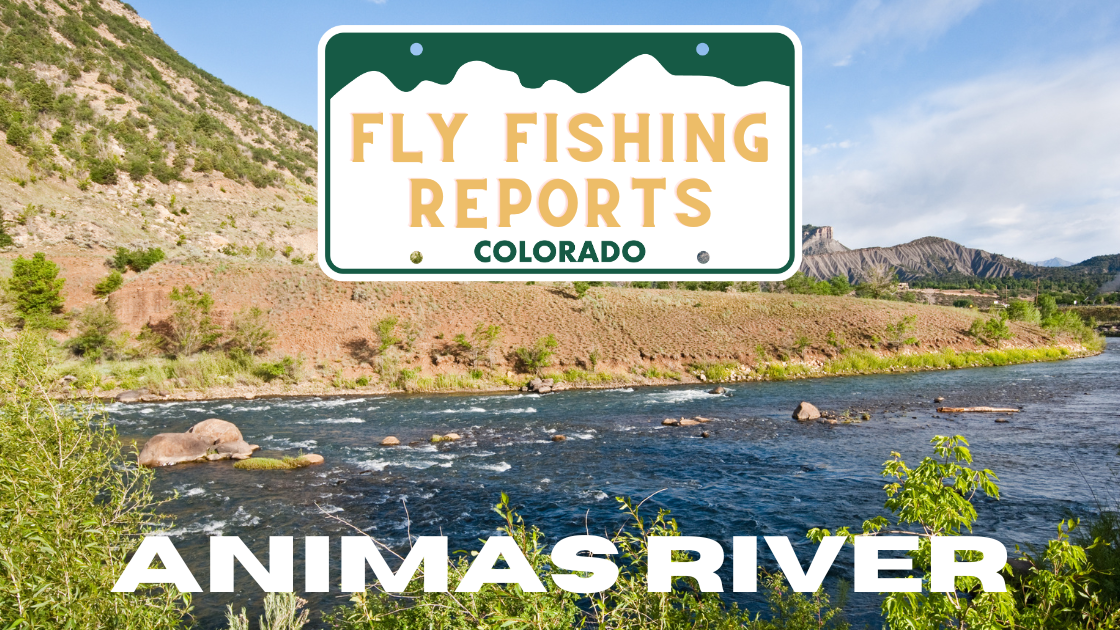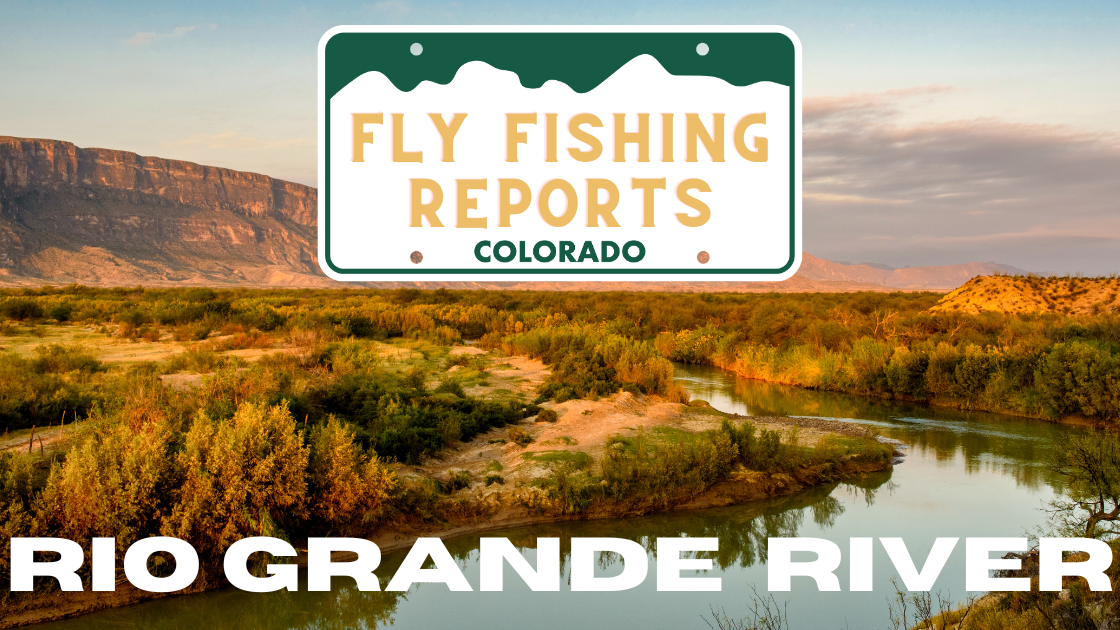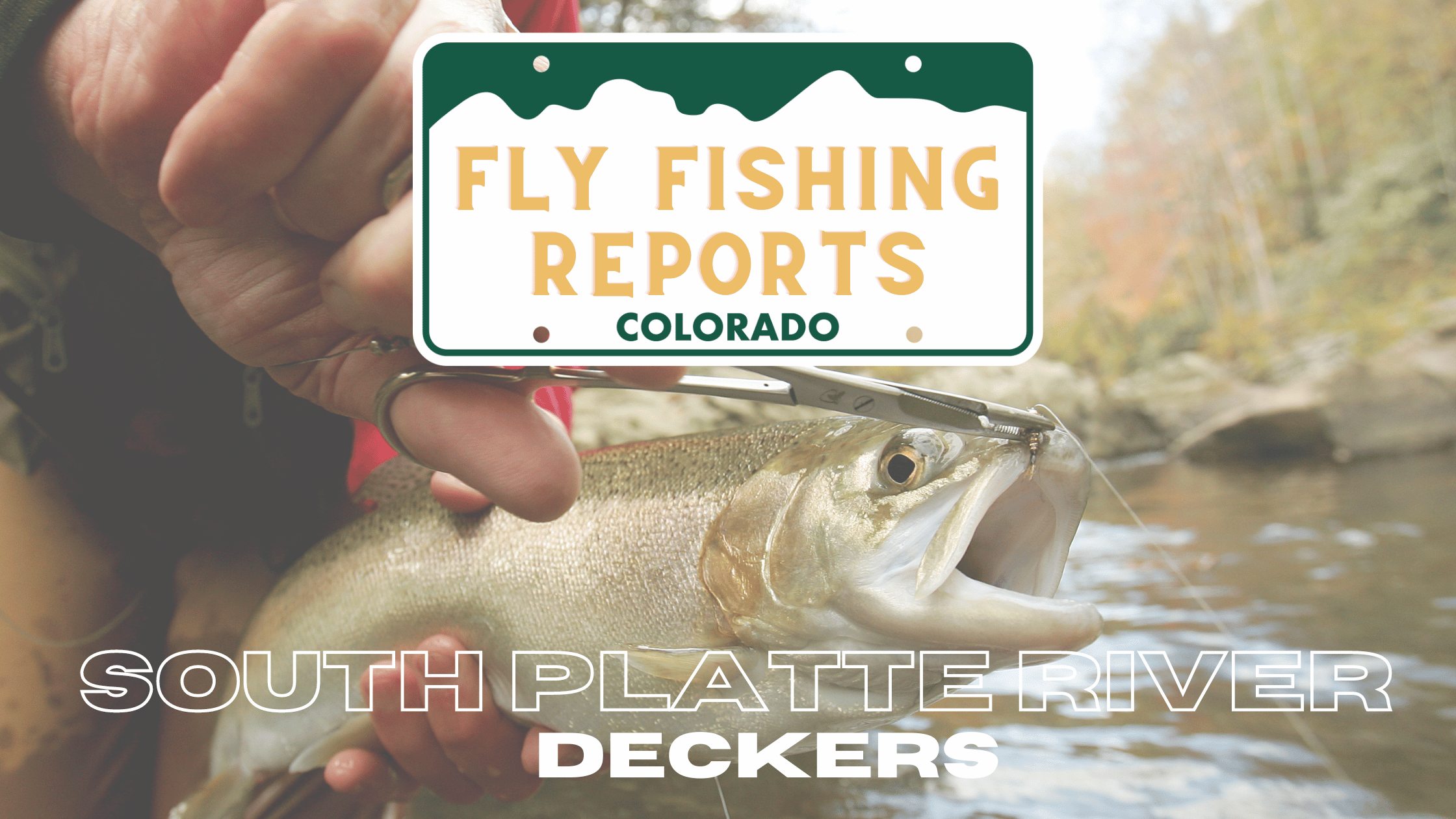The Blue River below Green Mountain Reservoir is a classic Colorado tailwater known for its clear flows, consistent temperatures, and thriving trout population. Flowing through rugged canyons and picturesque valleys, this stretch of the Blue offers anglers excellent opportunities to target wild rainbows and browns in a tranquil, scenic setting. The river’s cold, oxygen-rich water supports year-round fishing, with midges, Blue Wing Olives, and streamers being the most effective patterns in late fall. Whether nymphing deep runs or stalking rising fish during midday hatches, this section promises technical challenges and rewarding catches amidst stunning alpine surroundings.
Blue River Fishing Report – Near Green Mountain Reservoir – December 2024
Winter fishing on the Blue River near Green Mountain Reservoir offers a serene and rewarding experience for anglers willing to brave the cold. The flows are 50-70 CFS, running clear with chilly water temperatures around 34-38°F, creating technical conditions ideal for those who enjoy a challenge. Trout are holding in deeper pools and slower runs, feeding primarily on midges and small nymphs.
Late morning through early afternoon is the prime window, as sunlight warms the water slightly and activates feeding. Nymphing is the go-to method here, but small streamers can tempt the occasional larger trout lurking near structure. With its peaceful surroundings and the potential for quality fish, this stretch of the Blue River is a gem for winter anglers.
Conditions Summary
%20(2).png?width=800&height=175&name=Guide%20Rating%20(800%20x%20175%20px)%20(2).png)
- Flow Rate: 50-70 CFS
- Water Temperature: 34-38°F
- Clarity: Clear
- Best Times: Late morning to early afternoon
- Current Conditions Rating: ⭐⭐⭐⭐ (4/5) – Quiet, scenic, and productive for those who embrace the cold.
River Flow Chart
Blue River Hatch Chart – Near Green Mountain Reservoir
| Month | Primary Hatches | Effective Patterns |
|---|---|---|
| December | Midges | Zebra Midge (#20-24), Black Beauty (#20-24) |
| January | Midges | WD-40 (#20-24), Miracle Midge (#20-24) |
| February | Midges, Baetis (BWO) | Blue Wing Olive (#20-22), Griffith’s Gnat (#20-24) |
Top 3 Flies for the Week
- Dry Fly: Griffith’s Gnat (#20-24) – Effective during midday midge hatches in calmer water.
- Nymph: Zebra Midge (#20-24) – Essential for targeting trout in deep pools and slow runs.
- Streamer: Olive Woolly Bugger (#8-10) – A solid choice for larger, aggressive trout near structure.
Tips Fly Fishing on the Blue River
Seasonal Tip
Winter fishing requires patience and precision. Focus on slower water where trout are holding and use stealthy approaches.
Dry Fly
Look for subtle surface activity during midday midge hatches. Small, delicate presentations with Griffith’s Gnats work best.
Nymphing
Use a two-fly rig with a Zebra Midge and a Black Beauty, adding split shot to get flies deep in the strike zone.
Streamer Fishing
Fish streamers like Olive Woolly Buggers slowly along undercut banks and near submerged rocks for bigger trout.
Access Points
.png?width=600&height=400&name=fly%20fishing%20in%20colorado%20(72).png)
Blue River Below Green Mountain Reservoir
- Description: The most popular access point, offering slower runs and deeper pools ideal for winter fishing.
- Why Fish Here: Reliable trout activity and a mix of water types make this spot a favorite.
- Location: Off County Road 30, below the dam.
- Locals' Rating: ⭐⭐⭐⭐
Heeney Road Access
- Description: Scenic and quiet, with slower water perfect for nymphing and the occasional dry fly action.
- Why Fish Here: Excellent solitude and consistent trout activity.
- Location: Off Heeney Road, near Green Mountain Reservoir.
- Locals' Rating: ⭐⭐⭐⭐
Local Regulations and Notes on Landowner Rights
The Blue River near Green Mountain Reservoir features public access points, but be aware of private property boundaries. A valid Colorado fishing license is required, and catch-and-release practices are encouraged to maintain the fishery.
.png?width=300&height=100&name=Rise%20Beyond%20Logo%2010.29.24%20300x100px%20(2).png)
.png)
.png?width=2240&height=1260&name=Colorado%20Stream%20Fly%20Fishing%20Reports%20(32).png)

.jpg?width=500&height=500&name=New%20Amazon%20Listing%20Images%20-%20Streams%2c%20Hoppers%20and%20Dries%20(29).jpg)


